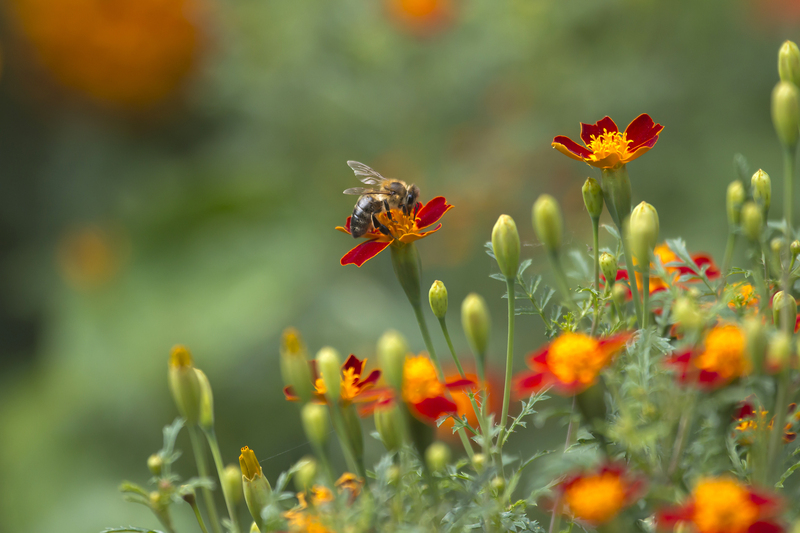Elevate Your Green Thumb with Vertical Gardening
Posted on 09/06/2025
Elevate Your Green Thumb with Vertical Gardening: The Ultimate Guide
Is your love for plants limited by the size of your garden, balcony, or home? Do you dream of lush greenery but lack sprawling landscapes to plant your favorite herbs and flowers? Vertical gardening is a revolutionary solution that allows everyone--from urban dwellers to suburban enthusiasts--to elevate their green thumb.
In this comprehensive article, we'll explore the world of vertical gardens, offering expert advice and practical tips to help you transform even the smallest space into a flourishing green sanctuary.

What is Vertical Gardening? Understanding the Concept
Vertical gardening is the practice of cultivating plants in vertically stacked layers or on upright surfaces, rather than the traditional horizontal beds. This innovative approach opens up a new realm of possibilities, making gardening accessible and enjoyable for everyone.
- Vertical planters, trellises, and green walls can be set up indoors or outdoors.
- Maximize space efficiency in small homes, apartments, or balconies.
- Enhance aesthetics while insulating your home and purifying air.
Why is Vertical Gardening Trending?
Urbanization and shrinking green spaces have made vertical gardens more popular than ever. They offer a flexible, space-saving, and sustainable way to cultivate a variety of plants--flowers, vegetables, herbs, and even fruit!
- Improves air quality and brings nature closer
- Reduces carbon footprint and provides habitat for pollinators
- Transforms unused vertical space into lush displays
Benefits of Vertical Gardening: Why You Should Try It
Curious why so many gardeners are embracing vertical gardens? The advantages go far beyond aesthetics. Here's why you should elevate your green thumb with this dynamic technique:
1. Space Optimization
With vertical gardening, your square footage no longer limits your ambitions. By growing upwards, you can cultivate more plants in less space.
2. Enhanced Plant Health
Raising plants off the ground improves air circulation, which reduces the likelihood of fungal diseases and pest infestations.
3. Accessibility and Convenience
No more bending, kneeling, or heavy digging! Vertical gardens are especially beneficial for seniors or those with limited mobility.
4. Year-Round Harvests
Grow fresh herbs, vegetables, or microgreens indoors throughout the year, regardless of climate.
5. Aesthetic Appeal
Vertical gardens add a dramatic, living art piece to homes, offices, and public spaces.
6. Environmental Benefits
- Improves air quality by absorbing pollutants
- Reduces noise pollution
- Offers insulation for energy efficiency
Types of Vertical Gardens: Explore Your Options
There are numerous ways to elevate your green thumb with vertical gardening. Choose the method that suits your space, style, and plant preferences:
1. Living Green Walls
These large-scale installations feature a matrix of plants grown on a vertical surface. Living walls are often irrigated automatically and are a stunning addition to large indoor and outdoor spaces.
2. Vertical Planters
From pocket planters to stacked pots and modular systems, these options make it easy to start small and expand as you gain confidence.
3. Trellises and Climbing Structures
Ideal for vining vegetables, climbers, and flowering creepers like peas, beans, morning glories, or ivy.
4. Pallet Gardens
Recycled pallets can be transformed into rustic vertical gardens for flowers, succulents, or herbs. It's an eco-friendly solution that adds charm to any space.
5. Hydroponic Vertical Farms
Soil-free and highly efficient, these systems are perfect for maximizing yields in a compact area--ideal for herbs, lettuces, and some vegetables!
How to Start Your Own Vertical Garden
Ready to dive into the world of vertical gardening? Follow these essential steps to ensure success from the start:
1. Assess Your Space
- Identify available walls, fences, balconies, or even indoor corridors.
- Consider sunlight patterns and accessibility for watering and maintenance.
2. Choose Your Plants Wisely
- Select plants suited to your space's light and humidity conditions.
- Herbs (like basil, mint, and oregano), salad greens, ferns, succulents, and trailing flowers are popular choices for beginners.
3. Select the Right Vertical Garden System
- Shop for pre-made vertical gardening systems or DIY with recycled materials.
- Pocket planters, modular panels, and wall-mounted pots are readily available.
4. Prepare the Growing Medium
- Use lightweight, high-quality potting mix for soil-based gardens.
- Adopt hydroponic setups if growing without soil.
5. Install and Plant
- Secure your vertical structure safely, especially if it will bear significant weight.
- Arrange plants with similar water and sun requirements together.
- Water thoroughly after planting and monitor soil moisture.
Best Plants for Vertical Gardens
Not all plants thrive equally in vertical settings. To elevate your green thumb with vertical gardening, focus on varieties that adapt well to upright environments:
- Herbs: Basil, mint, parsley, oregano, thyme, chives
- Leafy greens: Lettuce, spinach, arugula, Swiss chard, kale
- Vining vegetables: Peas, beans, cucumbers, cherry tomatoes
- Fruiting plants: Strawberries, dwarf tomatoes, small peppers
- Ornamental plants: Ferns, succulents, spider plants, petunias, ivy
Maintenance Tips for a Flourishing Vertical Garden
Once your vertical garden is established, maintaining its health and beauty becomes your next priority. Here's how to keep your green wall vibrant year-round:
1. Watering
- Consistent moisture is key, as vertical planters can dry out faster.
- Consider drip irrigation or self-watering systems for larger installations.
2. Fertilizing
- Feed your plants with an all-purpose or plant-specific fertilizer every 2-4 weeks.
- Flush out salt buildup with occasional heavy watering.
3. Pruning and Replacing Plants
- Trim overgrown plants to enhance airflow and promote bushier growth.
- Replace any unhealthy or spent plants promptly to maintain the display.
4. Pest and Disease Management
- Inspect plants regularly for insects or signs of disease.
- Use organic pest management methods, such as neem oil or beneficial insects.
Creative Vertical Gardening Ideas for Any Space
Looking for inspiration to truly elevate your gardening skills? Try these creative approaches to vertical gardening:
- Hanging Shoe Organizers: Repurpose fabric or plastic pocket organizers to grow herbs and small flowers.
- PVC Pipe Gardens: Mount cut PVC pipes horizontally, fill with soil, and plant strawberries or lettuce.
- Mason Jar Wall Gardens: Attach Mason jars to a wooden frame for a rustic kitchen herb garden.
- Recycled Bottle Gardens: Cut and hang plastic bottles in rows to make a mini greenhouse on a balcony.
- Tiered Bookshelf Plant Walls: Use old bookshelves to stack rows of plants for a lush, organized look.
Common Challenges and How to Overcome Them
While vertical gardening offers many benefits, it does bring some unique challenges. Here's how to tackle the most common issues:
1. Uneven Water Distribution
Plants on the top may receive more water than those below, or vice versa. Solution: Use moisture-retaining soil, install drip lines, and check moisture levels regularly.
2. Weight Constraints
A fully planted wall can become heavy. Solution: Use lightweight soils and pots, and ensure your wall or fence can support the load.
3. Plant Selection Issues
Not all plants thrive side by side. Solution: Group plants by their light and water needs for optimal results.
4. Sunlight Inequality
Some plants may be shaded by others higher up. Solution: Rotate plants periodically and trim larger species to allow light below.

Frequently Asked Questions about Vertical Gardening
Is vertical gardening suitable for beginners?
Absolutely! Many vertical plant gardens are easy to assemble and maintain, making them ideal for novice gardeners.
How often should I water my vertical garden?
It depends on plant selection, weather, and the garden's location. Generally, vertical gardens need more frequent watering than regular pots, especially in hot or windy conditions.
Can I build a vertical garden indoors?
Yes! Indoor vertical gardens are perfect for apartments and can be installed on kitchen walls, living rooms, or offices to elevate your green thumb indoors.
What is the maintenance level for vertical gardens?
With the right setup and plant choice, vertical gardening can be low maintenance, requiring only watering, occasional feeding, and minimal pruning.
Conclusion: Elevate Your Green Thumb Today
Vertical gardening is transforming the way we interact with plants and nature. By elevating your green thumb with a vertical garden, you unlock possibilities--from maximizing tight spaces to beautifying stark walls, and even cultivating your own food indoors.
Are you ready to elevate your gardening journey? Start your own vertical garden, embrace sustainable living, and watch your space come alive with lush, vibrant greenery--no matter where you live!
- Maximize your space
- Grow fresher, healthier plants
- Boost your home's appeal and air quality
- Experience the joy of sustainable gardening
Elevate your green thumb with vertical gardening today--your walls are waiting to be transformed into thriving, living works of art!

